Trust us, you’re looking at the updated Mitsubishi Outlander. It may not look all that different, but that doesn’t mean nothing has changed.
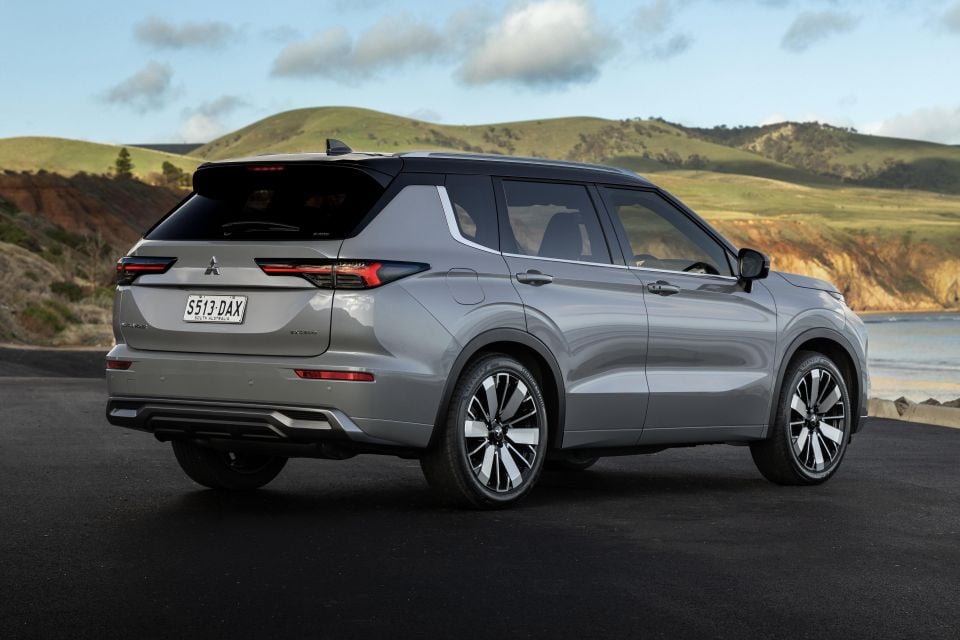
Outside, the front and rear bumpers have been tweaked, and there are new wheel designs for each different size. You can also option the Outlander in a new Moonstone Grey signature paint colour.
Inside are new screens, a reconfigured centre console, different colourways, adjustments to five- and seven-seat availability across the range, and a premium sound system engineered in collaboration with Yamaha.
But it’s what’s under the skin that matters most. Mitsubishi says it has listened to feedback (and criticism) from Australian customers and media to improve and refine the driving experience offered by the Outlander, and the culmination of that is what you see here.
The popular mid-size SUV has received a substantial Australian ride and handling retune, developed and tested on hilly rural roads south of metropolitan Adelaide, which hold a special importance for the Japanese brand that developed and produced vehicles in South Australian until 2008.
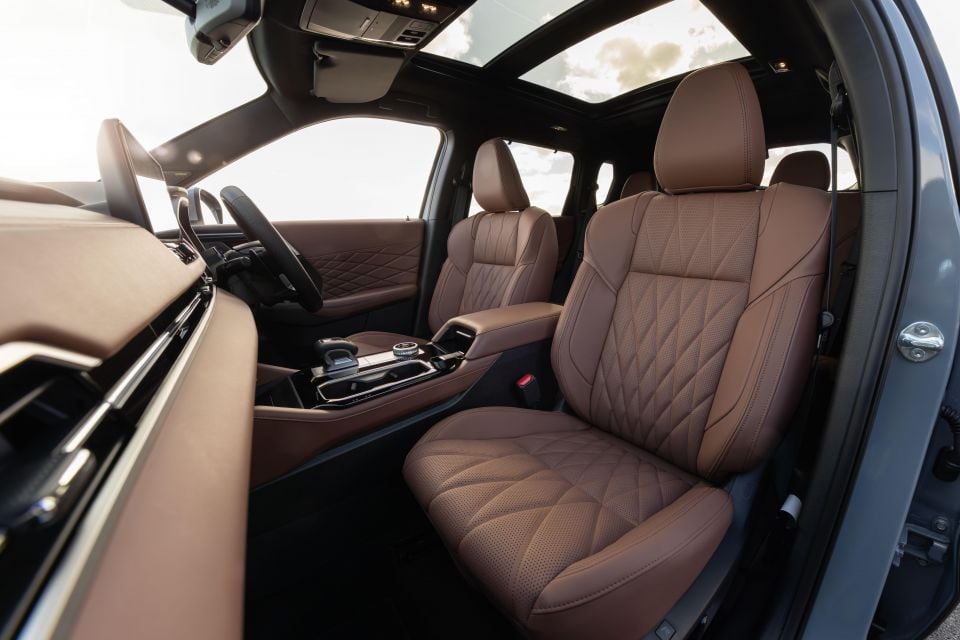
Mitsubishi has conducted countless runs on roads in the area for the best part of 25 years, using it to develop cars like the Australian-built 380 of the early 2000s, and the Magna, Colt, Sigma and Galant before that.
The roads are so useful that sections of it have even been scanned and rebuilt at Mitsubishi’s proving ground in Japan.
Beyond the local chassis retune, which includes a recalibrated electric power steering system as well as revised suspension, the Outlander also now has more noise insulation and different body panel materials to reduce interior noise, vibration and harshness.
All that now forms a more solid foundation for the updated Outlander, and the Australian chassis tune will even be used globally by Mitsubishi – perhaps there’s some life in our local automotive manufacturing industry after all.
Mitsubishi recently invited media to drive the latest Outlander on the very roads it was developed on, allowing us an almost-insider look into the brand’s R&D process. Has the new setup hit the spot?
How much does the Mitsubishi Outlander cost?
The Outlander range now starts at $39,990 before on-roads and extends to $57,990 plus on-roads. That means prices are up by roughly $2000 or $3000 depending on the variant, across the board.
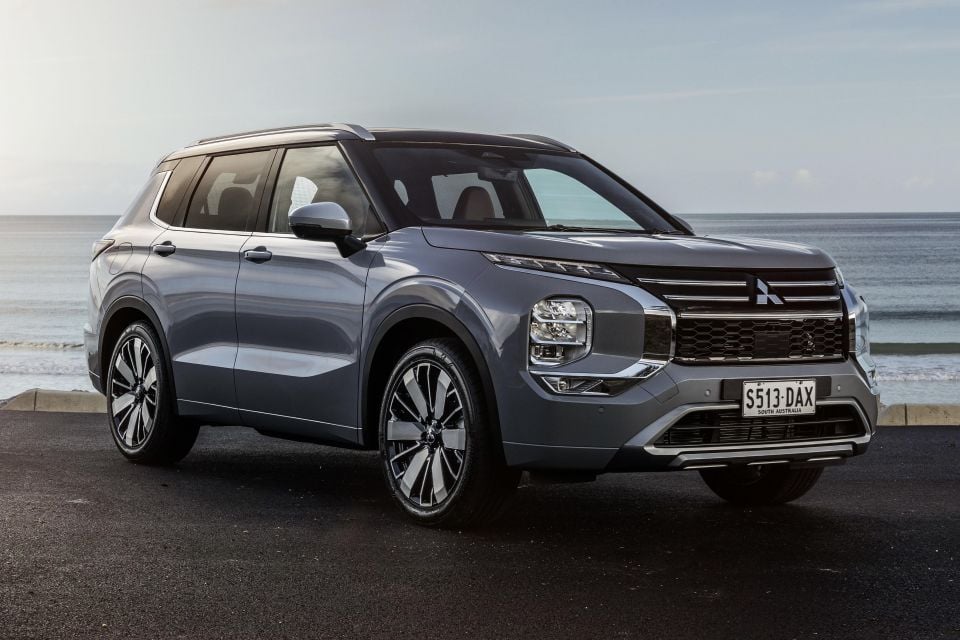
| Model | Price before on-road costs |
|---|---|
| 2025 Mitsubishi Outlander ES FWD | $39,990 |
| 2025 Mitsubishi Outlander ES AWD | $42,490 |
| 2025 Mitsubishi Outlander LS FWD | $43,290 |
| 2025 Mitsubishi Outlander LS AWD | $45,790 |
| 2025 Mitsubishi Outlander Aspire FWD | $47,790 |
| 2025 Mitsubishi Outlander Aspire AWD | $50,290 |
| 2025 Mitsubishi Outlander Exceed AWD | $55,140 |
| 2025 Mitsubishi Outlander Exceed Tourer AWD | $57,990 |
Mid-size SUVs are the most popular new-vehicle type in Australia and the huge market segment is also one of the most populous and competitive. The Outlander is traditionally a top-three player in this segment, behind the Toyota RAV4 and Mazda CX-5, and other similarly priced rivals include the Subaru Forester, Hyundai Tucson, Kia Sportage, and the related Nissan X-Trail.
Newer competitors from China also include the Chery Tiggo 8 and MG HS, as well as the BYD Sealion 6 – though the latter is a closer rival for the Outlander PHEV, and updated version of which arrives later this year.
To see how the Mitsubishi Outlander stacks up against its rivals, use our comparison tool
What is the Mitsubishi Outlander like on the inside?
Tweaks here are subtle, but several of the basics have been well honed.
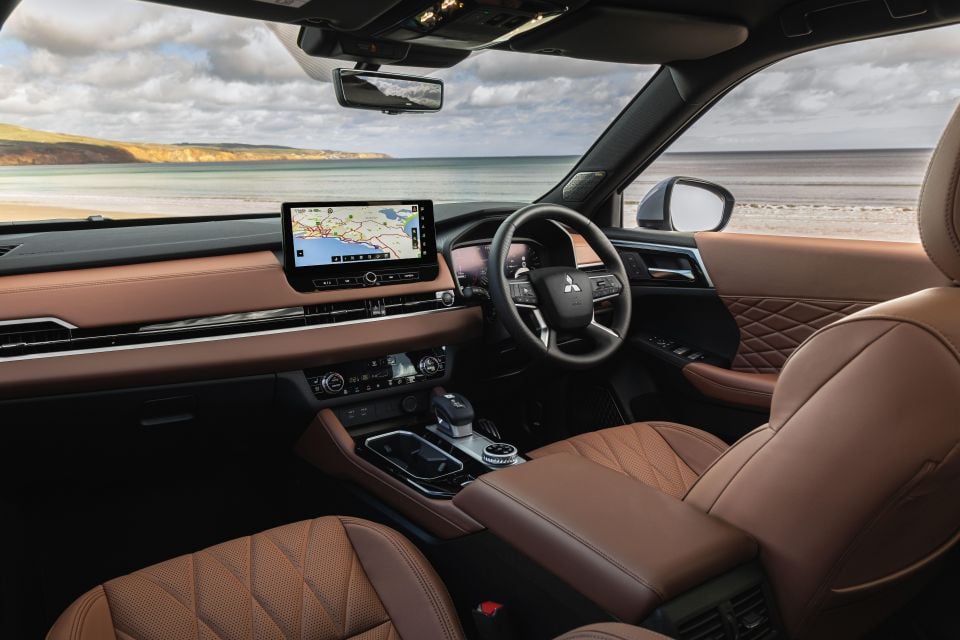
Those familiar with the pre-existing Outlander will immediately notice the new screens for infotainment and instrumentation up front, both of which now measure 12.3 inches.
Both are sharp and easy to operate. The instrument display may initially appear cluttered thanks to the amount of text and symbols, but this will become normal after some time with the car – there’s also a little bit of customisation for gauge style.
The infotainment screen is also responsive but shows signs of graphic aging, though this is expected given it’s shared with the Nissan X-Trail. It’s characterised by the vertical ribbon on the left of the screen, as well as the glossy black buttons underneath.
You still get wireless Apple CarPlay as standard, and wireless Android Auto is now available for the first time.
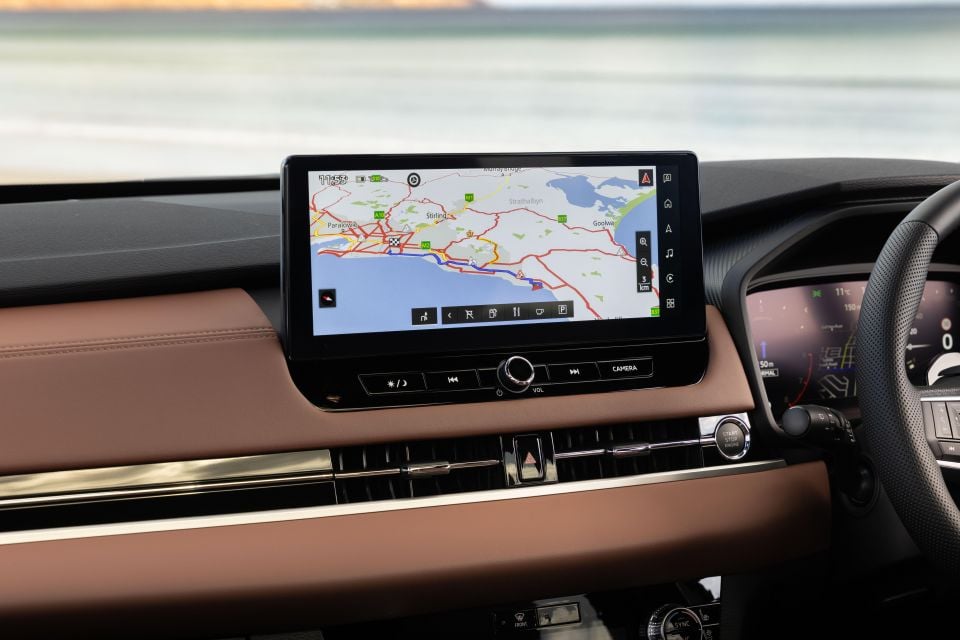
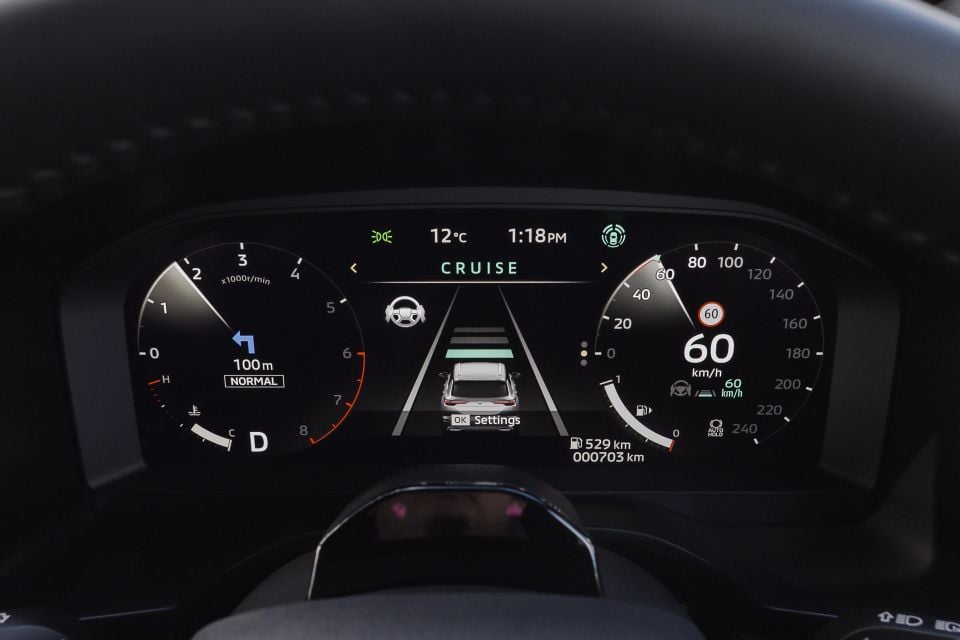
Despite the larger screen, Mitsubishi has kept the Outlander’s climate system isolated and completely physical, which is a welcome move. It features an array of buttons plus two dials and a simple digital screen, in a setup that is clear and easy to fiddle with on the move.
Our only complaint is that it’s finished in glossy black plastic, and the same can be said for the large centre console in the middle. This will quickly attract fingerprints and smudges.
That said, this area is now more practical than ever. Mitsubishi says it listened to customer feedback to redesign the layout of the centre console, which involved moving the cupholders out from under the central armrest for easier access.
They’re also installed lengthways instead of sideways, again making them easier to use on the move. This has allowed for a cleaner design here, with the gear selector and drive mode dial occupying a large piece of silver plastic.
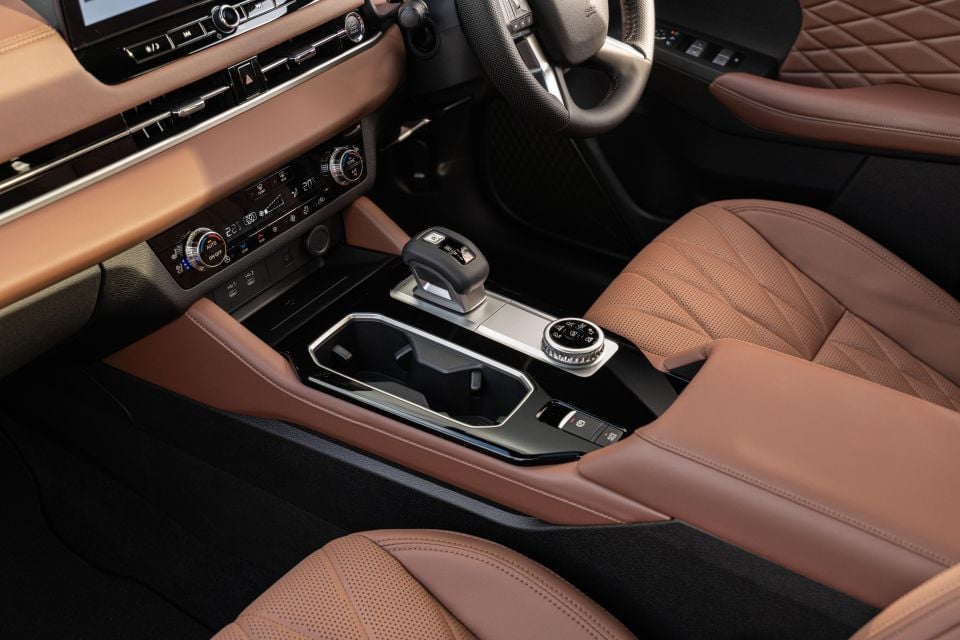
In this area is also a wireless phone charger for all variants bar the base ES, as well as a pair of USB-C ports. It’s also worth noting that the drive modes shown on the central dial will depend on whether your Outlander is a front- or all-wheel drive variant – carried over from the pre-update model.
Ahead of the driver is a chunky steering wheel, which is finished in leather from LS trim level and up. It’s a quality item, and feels nice in the hands thanks to the perforations at each side, while the dull plastic buttons add a level of durable tactility.
Leather-trimmed seats are fitted in the top two trim levels, with quilted upholstery and multiple colour finishes also available. These seats are nicely bolstered and offer a strong range of adjustment, while ventilation and massage functions add a touch of luxury.
Complementing the seats are soft touch points on the centre and door armrests, finished in the same material. It makes for a very comfy cabin, and it’s easy to do long stints behind the wheel as a result.
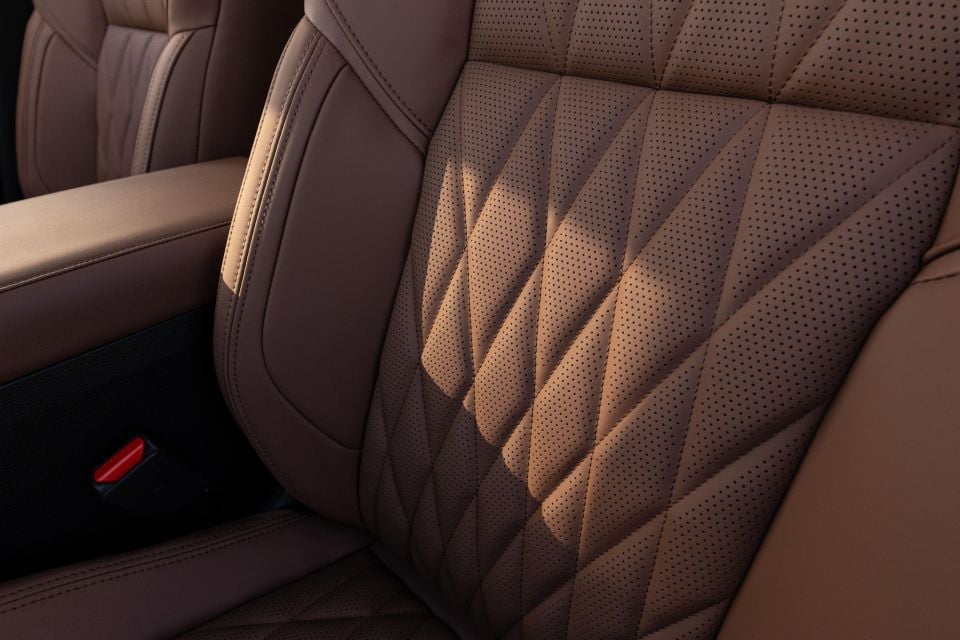
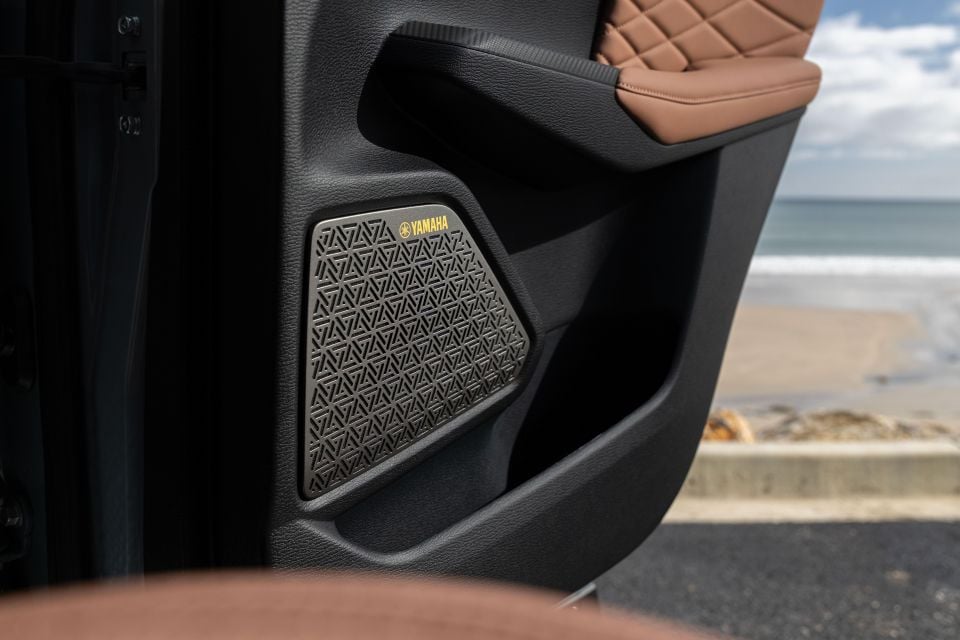
New to the Outlander is a premium audio system, which was developed by Yamaha specifically for this car. All variants except the top Exceed Tourer get the more ‘standard’ of the two sound systems available, but the sound produced is of exceptional quality.
The range on hand is impressive, with deep bass tones and more nuanced high-pitch sounds both equally clear.
Upgrading to the Ultimate system in the Exceed Tourer takes things up another notch, but you won’t be missing out if you opt for a lower trim level.
You also have the option to adjust how sound travels to you, primarily by setting which seat should be the focus. It’s a high-quality standard feature, and paves the way for Yamaha to be involved in future Mitsubishi products too.
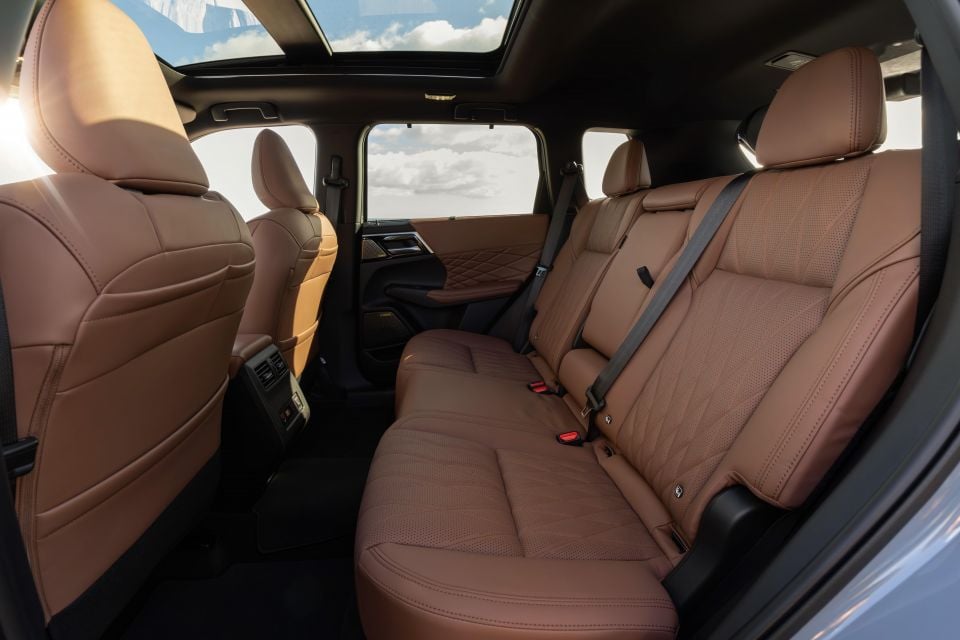
Moving to the back reveals a spacious area, with plenty of headroom and legroom. The seats are relatively comfortable, while the recline angle is adjustable using large tabs next to the head restraints.
Passengers here have the luxury of a simple climate control interface on the back of the centre console. Two USB-C ports are also fitted from Outlander LS and up, while the top-spec Exceed Tourer gets heated outboard seats.
Mitsubishi has also added some pouches on the front seatbacks for phones and the like, though we find the central cupholders to be strange. There is an armrest that folds from the back of the middle seat, but you need to fold down the entire middle seat if you want cupholders – a unique setup that creates a gaping hole into the boot.
There have also been tweaks to five- and seven-seat variant options, as the Exceed and Exceed Tourer are now five-seat only. The only seven-seat (really a 5+2) model available to us was the Aspire, which offers a child-sized third row best used for short trips.
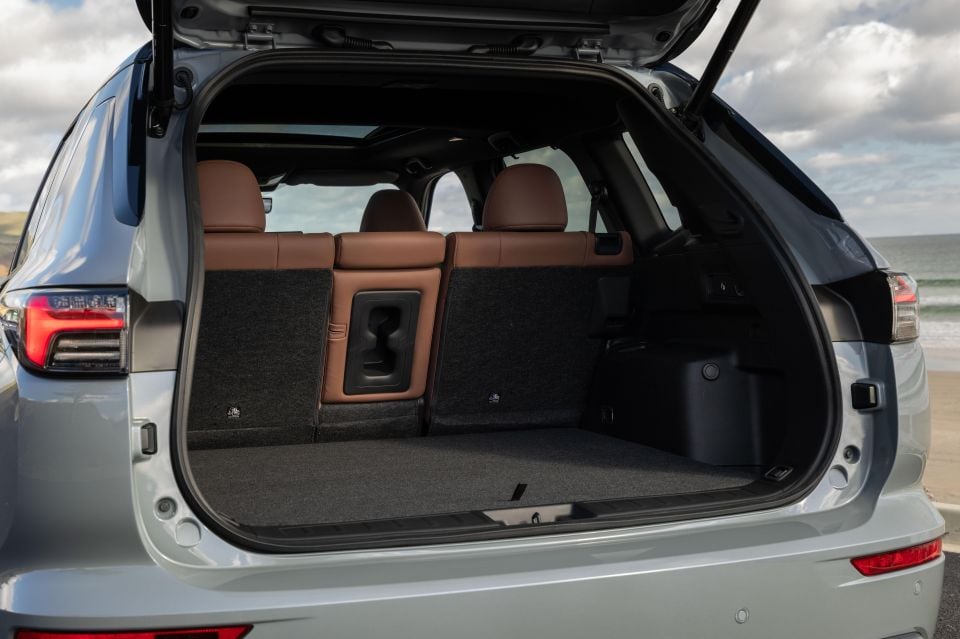
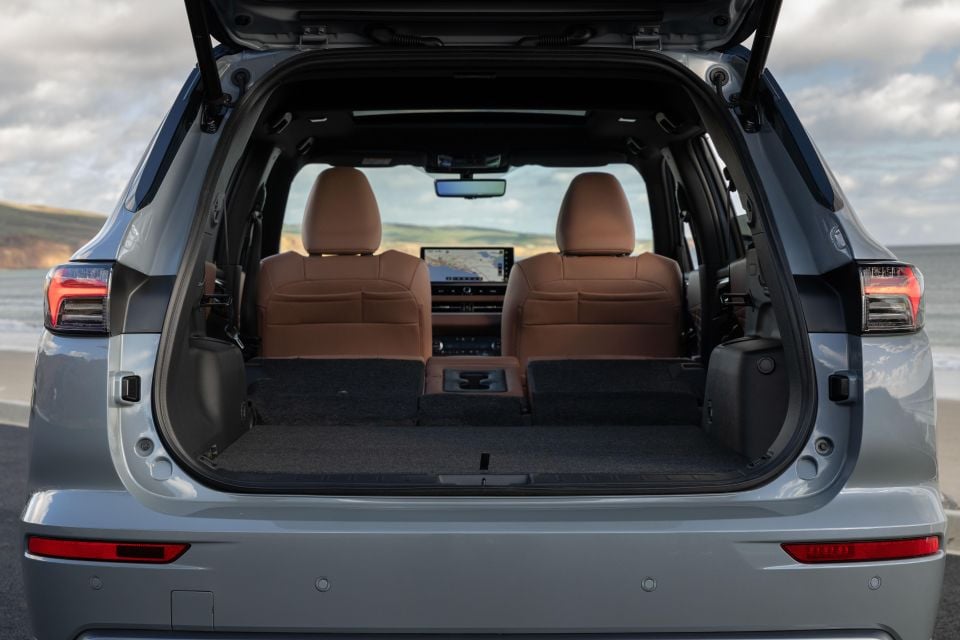
When not in use, the third row folds neatly into the boot floor, while the head restraints tuck into their own nook. Boot capacity varies between each seating configuration, with 163 litres being the smallest in seven-seat vehicles, expanding to 485 litres in five-seaters.
The maximum capacity across all seven-seaters is 1461 litres, while Exceed and Exceed Tourer grades offer the most of the five-seaters at 1473 litres. That means there’s enough space to fit cargo for a whole family, even if the quoted volume is smaller than some rivals.
For comparison, the outgoing Subaru Forester offers a maximum capacity of 1768 litres, while a non-hybrid Tucson offers 1860 litres.
To sweeten the Outlander, a powered tailgate is standard from Aspire level and up, while all five-seat models get a full-size alloy spare wheel, which is pretty rare these days.
| Dimensions | Mitsubishi Outlander |
|---|---|
| Length | 4720mm |
| Width | 1862mm |
| Height | 1742–1745mm |
| Wheelbase | 2706mm |
| Ground clearance | 205–210mm |
| Cargo capacity (VDA) | 163-1473L |
To see how the Mitsubishi Outlander stacks up against its rivals, use our comparison tool
What’s under the bonnet?
Powering the updated Outlander is the same 2.5-litre naturally aspirated four-cylinder petrol engine as before, which pushes out 135kW of power and 244Nm of torque. It’s mated to a continuously variable automatic transmission (CVT) in either front- or all-wheel drive configurations.
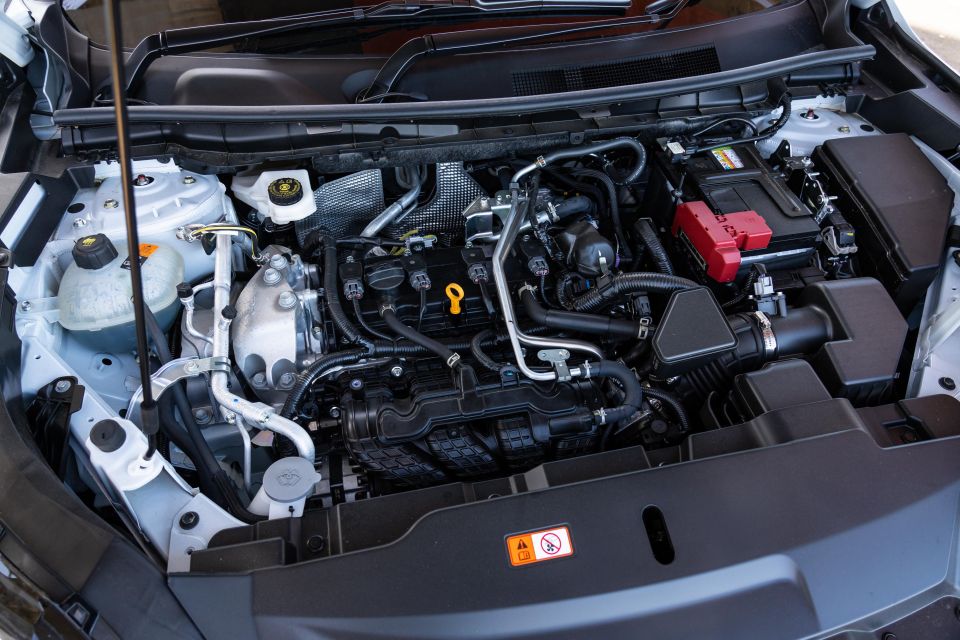
| Specifications | Mitsubishi Outlander |
|---|---|
| Engine | 2.5L naturally aspirated 4cyl |
| Power | 135kW @ 6000rpm |
| Torque | 244Nm @ 3600rpm |
| Transmission | ‘8-speed’ CVT |
| Drive type | FWD or AWD |
| Kerb weight | 1585-1640kg (FWD) 1640-1695kg (AWD) |
| Fuel economy (claimed) | 7.5-7.7L/100km (FWD) 7.8-8.1L/100km (AWD) |
| Fuel tank capacity | 55L |
| Fuel requirement | 91-octane unleaded |
| CO2 emissions | 170-174g/km (FWD) 177-185g/km (AWD) |
| Emissions standard | Euro 5 |
| Braked tow capacity | 1600kg |
We didn’t get enough time in any one Outlander during Mitsubishi’s launch drive to record an accurate real-world fuel economy figure, so we’ll follow this up when we get one for testing.
To see how the Mitsubishi Outlander stacks up against its rivals, use our comparison tool
How does the Mitsubishi Outlander drive?
This is where the big changes have taken place, but before we dive in it’s important to set the scene.
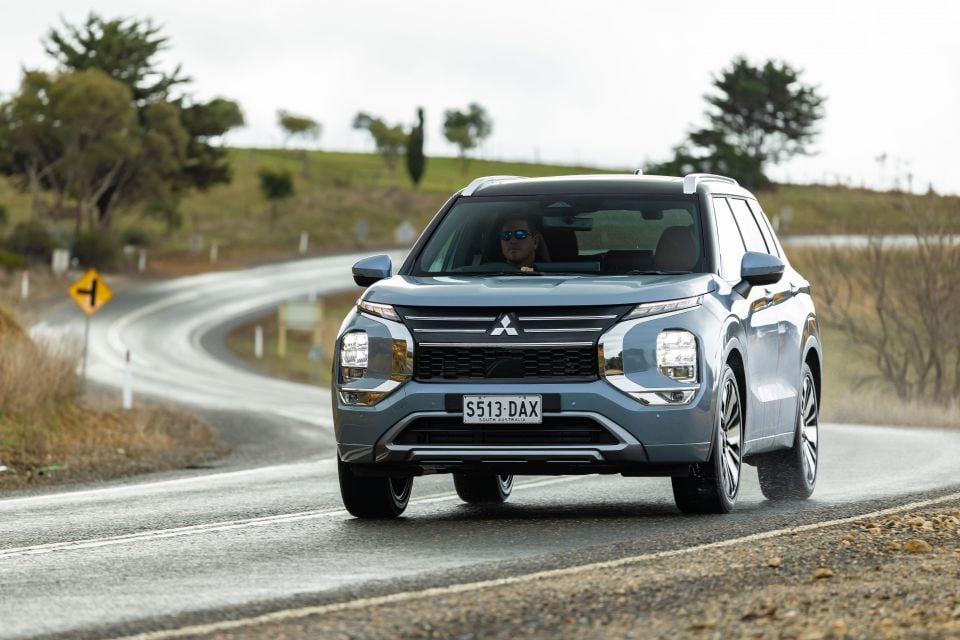
As mentioned, the roads south of Adelaide were the test bed for the updated Outlander. The road Mitsubishi chose to demonstrate this was Inman Valley Road outside Normanville – a twisty, hilly road with loads of bumps and holes specifically chosen to unsettle cars at speed.
For the record, suspension changes include a smaller-diameter front anti-roll bar to compliment the revised steering system (see below), recalibrated front and rear shock absorbers with revised rebound and compression damping, and recalibrated front and spring rates.
To best demonstrate the difference between old and new, Mitsubishi took the unusual step of wheeling out a pair of 2024 Outlanders and allowing us to drive them along this road back-to-back with their updated counterparts. Put simply, it’s night and day.
Where the old model would clatter over bumps and skittle about with an unsettled feel mid-corner, the updated version stays planted and shrugs off most significant hits. It feels much more capable of soaking up bumps and inspires more confidence behind the wheel.
And all this while offering greatly reduced body roll, making the Outlander a bit more sporty to drive.
The updated Outlander also feels more substantial and refined on the road, with fewer knocks, rattles and vibrations to boot – it’s admittedly difficult to pinpoint the impact of revised body materials or increased cabin insulation (there’s also a new isolator added to the transmission tunnel and a steel bonnet to reduce engine noise and vibration), but we don’t doubt they’re all part of the overall improvement in cabin refinement.
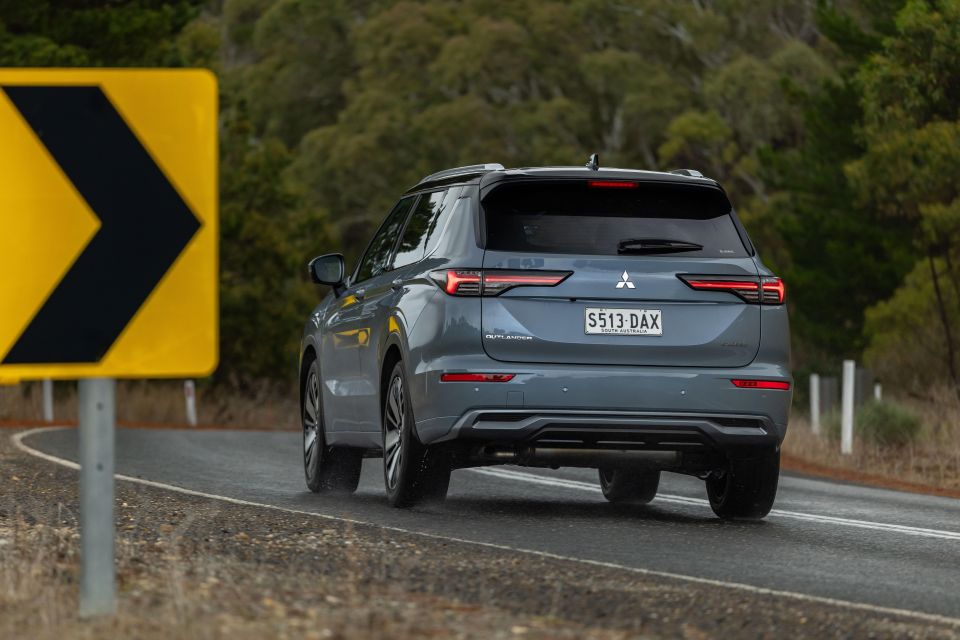
There’s also a “more dynamic” Bridgestone Alenza tyre for the 20-inch alloy wheels standard on Aspire, Exceed and Exceed Tourer variants, while ES and LS grades carryover their more comfort-biased tyres on fresh 18-inch alloy designs.
Naturally, the Outlander still falls short of the plush cushioning offered in more expensive and luxurious mid-size SUVs, but it’s now far more comfortable than it used to be and a good match for its direct competitors.
The other significant part of the local chassis tune was its electric power steering system (EPS), which was overly light and vague in the outgoing model. Mitsubishi says the EPS was recalibrated to improve the vehicle’s on-centre feel, steering linearity and feedback to improve handling and ensure easy manoeuvrability at parking speeds.
And indeed the revised EPS makes the car feel more stable at speed and less prone to being thrown off by mid-corner bumps, and makes it steer more directly around centre.
The updated steering complements the revised suspension perfectly. You now get acceptable feedback from the wheel when turning, and more stability in a straight line, and it’s easy to throw the car around without worrying about whether the front end will comply.
The Outlander is by no means a corner carver, but it’s now more than capable of keeping itself settled and sorted once roads get more technical and speed picks up. We also struggled to induce any serious understeer in the updated model, whereas we heard clear tyre squeal in the 2024 version.
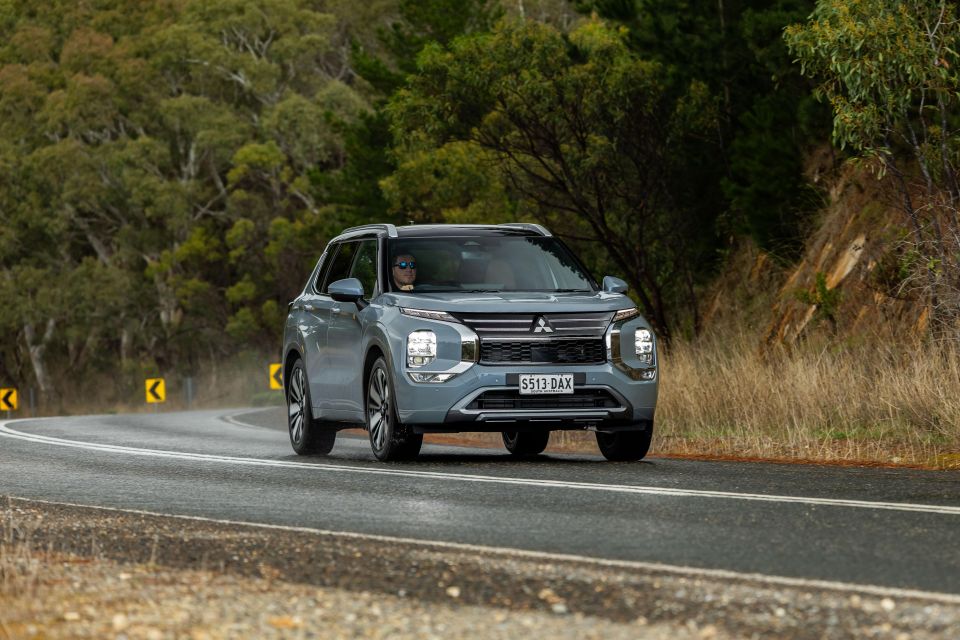
Find out more
Find out more about the car
Mitsubishi has tuned the electric power steering to be light at low speed but firmer at higher speeds, which makes the Outlander feel more stable on the highway while keeping easier to steer in carparks and the like.
Some road noise still makes its way inside, particularly in higher-spec variants with 20-inch wheels and tyre. It’s better than it was before, but we’d still expect smaller wheels to be the better option if cabin refinement is your priority.
This is also true if you want to take the Outlander on unsealed roads, as the 20-inch wheel/tyre combo has less compliance and forgiveness when its thinner sidewall hits rocks or potholes. Mitsubishi’s new design for this wheel may not be for everyone either.
We don’t love the brake feel, as we find it to be a bit too squishy. Trying to brake progressively will often end with the driver applying more force than anticipated, and the point at which the brakes begin to properly bite is relatively long and undefined in the pedal’s travel.
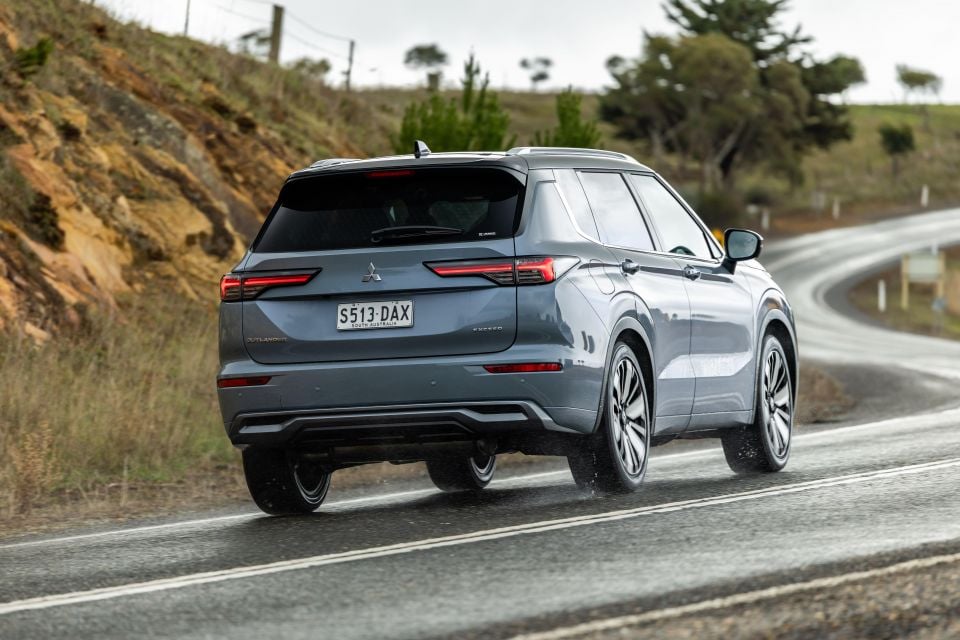
The throttle can also be touchy at low speed, though selecting Eco mode dulls its response. This makes it harder to trundle through gridlock traffic or carparks smoothly and comfortably.
Unchanged for this Outlander is its naturally aspirated engine and CVT transmission combo, which is still shared with the X-Trail. The powertrain is merely adequate for this SUV, capable of getting it up to speed smoothly and in an acceptable time.
Laying into the throttle will force the CVT to kick down a couple of ‘gears’, which can give the impression of a traditional torque converter auto. The engine will then scream into life, revving with a grating sound as it heaves to get the Outlander moving – especially uphill.
Combine this with a CVT that pretends to upshift and you get a powertrain that is as capable as it needs to be, but one that can be a bit dull and unpleasant hen pushed harder than normal driving.
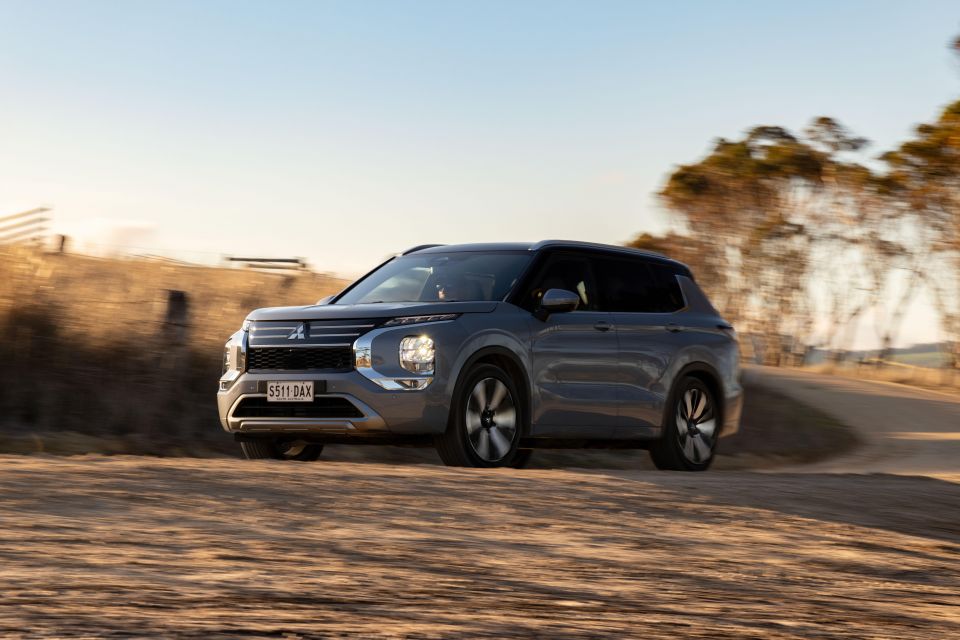
Other tweaks have been applied to the Outlander’s safety systems, including a new driver attention monitoring system like the one that debuted here in the current Triton ute.
Despite running the latest version of the brand’s software, many of the same complaints carry through here.
It will still beep at you if it detects you’re looking away from the road ahead for too long, which can happen even if you’re only glancing at the side mirrors, for example. It will also throw a warning saying your face can’t be detected if you have sunglasses on.
This is disappointing, but it’s not nearly as bad as the distraction monitoring system was in early examples of the new Tritons. Most of the time, the Outlander will warn you once and then pipe down, instead of persisting with annoying beeps and bongs.
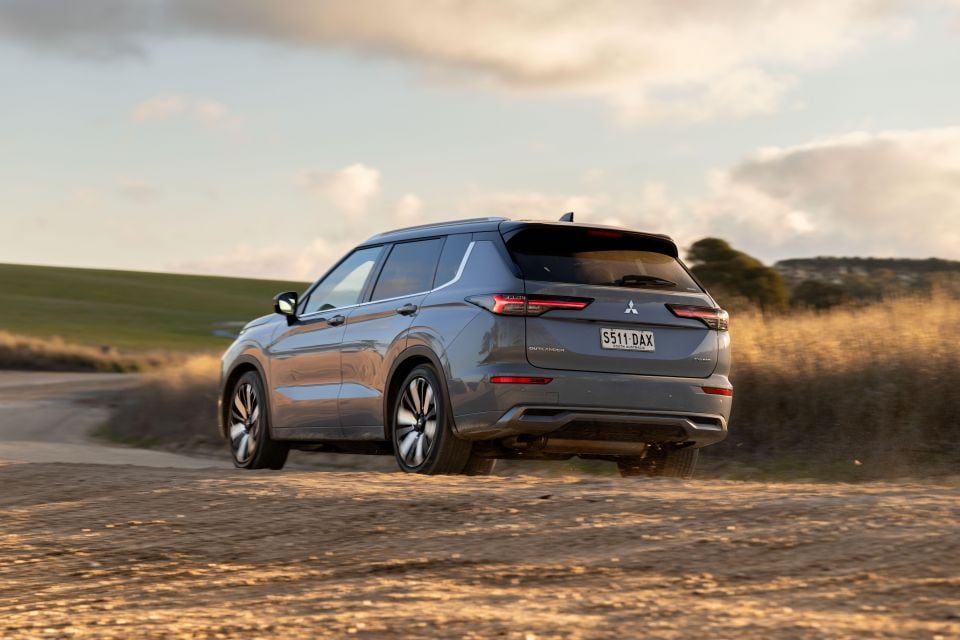
On a more positive note, the car’s adaptive cruise control can confidently keep up with traffic, while the associated lane-centring function is competent without being overbearing.
Its passive lane-keep function will vibrate the steering wheel loudly if you start crossing the line, but it won’t wrestle you for control.
And you have the same good visibility out of the vehicle as before, which is now supported by a frameless rear-view mirror with auto-dimming.
Also standard is a surround-view camera to help with parking, completing what is now a much more cohesive safety package for one of Mitsubishi Australia’s best-selling models.
To see how the Mitsubishi Outlander stacks up against its rivals, use our comparison tool
What do you get?
There are still five trim levels for the Outlander, encompassing a full range of standard gear.
2025 Mitsubishi Outlander ES equipment highlights:
- Five seats
- 18-inch silver alloy wheels
- Full-size alloy spare wheel
- Automatic LED headlights
- Full LED tail-lights
- Black cloth upholstery
- 12.3-inch digital instrument cluster
- 12.3-inch touchscreen infotainment system
- Wireless Apple CarPlay
- Wireless Android Auto
- Satellite navigation
- 8-speaker Dynamic Sound Yamaha Premium audio
- 3 x front USB-C outlets
- Dual-zone climate control
- 5 terrain drive modes
- 6 drive modes (AWD only)
Outlander LS adds:
- Seven seats
- 18-inch two-tone alloy wheels
- Space-saver spare
- Roof rails
- Rain-sensing wipers
- LED front fog lights
- Leather-wrapped steering wheel
- Leather-wrapped gear selector
- Wireless smartphone charger
- 2 x rear USB-C outlets
- Mitsubishi Connect
- Automatic collision notification
- Breakdown assistance
- Automatic collision, anti-theft and tow-away notifications
- Curfew, geo-fence and speed alerts
- Remote adjustment of climate control, locks, lights and horn
- Vehicle finder
- Navigation to final destination
Outlander Aspire adds:
- 20-inch alloy wheels
- Adaptive headlights
- Black leatherette upholstery
- Powered driver’s seat adjustment
- Heated front seats
- Heated steering wheel
- Head-up display
- Power tailgate
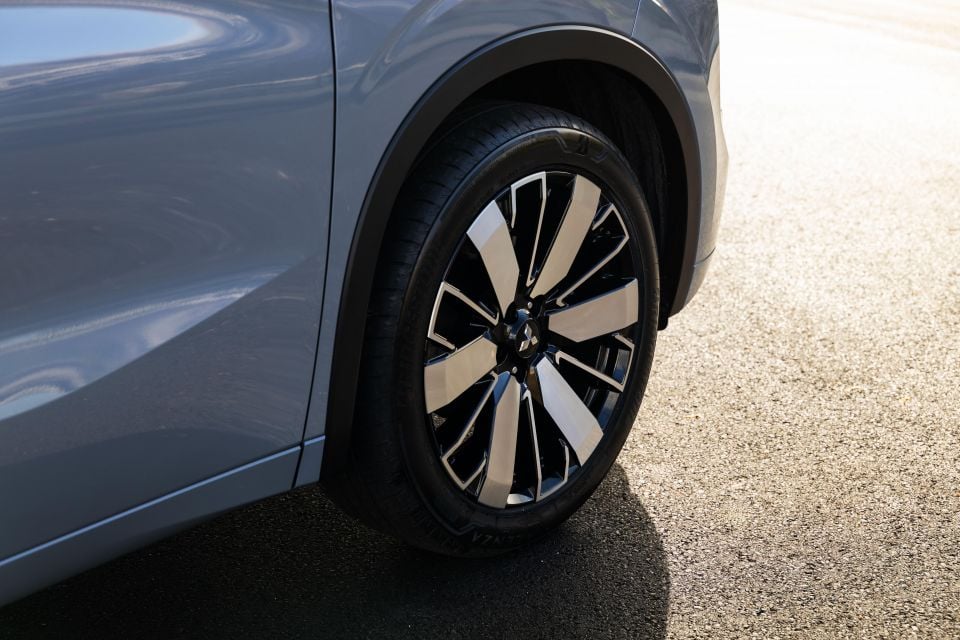
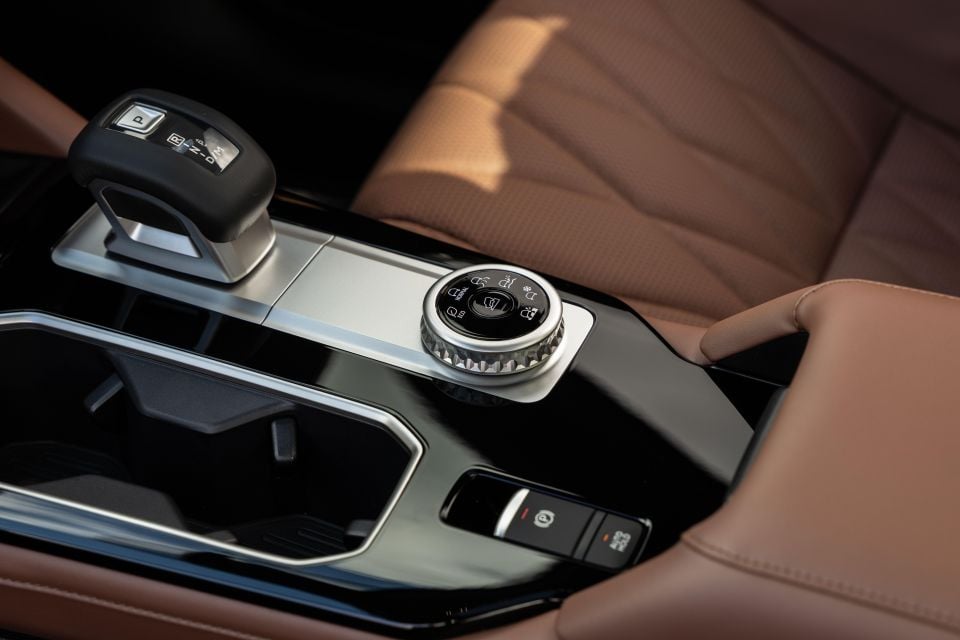
Outlander Exceed adds:
- Five seats
- 20-inch two-tone alloy wheels
- Full-size alloy spare wheel
- Black or grey quilted leather upholstery
- Ventilated front seats
- Powered passenger seat adjustment
- Aluminium pedals
- Digital rear-view mirror
- Exterior mirrors with memory, reverse auto-tilt
- Front door foot lamps
- Rear cargo floor box with lid
- Tri-zone climate control
Outlander Exceed Tourer adds:
- Brick Brown semi-aniline leather upholstery
- 12-speaker Dynamic Sound Yamaha Ultimate 1650W sound system
- Heated outboard rear seats
- Massaging front seats
To see how the Mitsubishi Outlander stacks up against its rivals, use our comparison tool
Is the Mitsubishi Outlander safe?
The Mitsubishi Outlander has a five-star ANCAP safety rating, based on testing conducted in 2022.
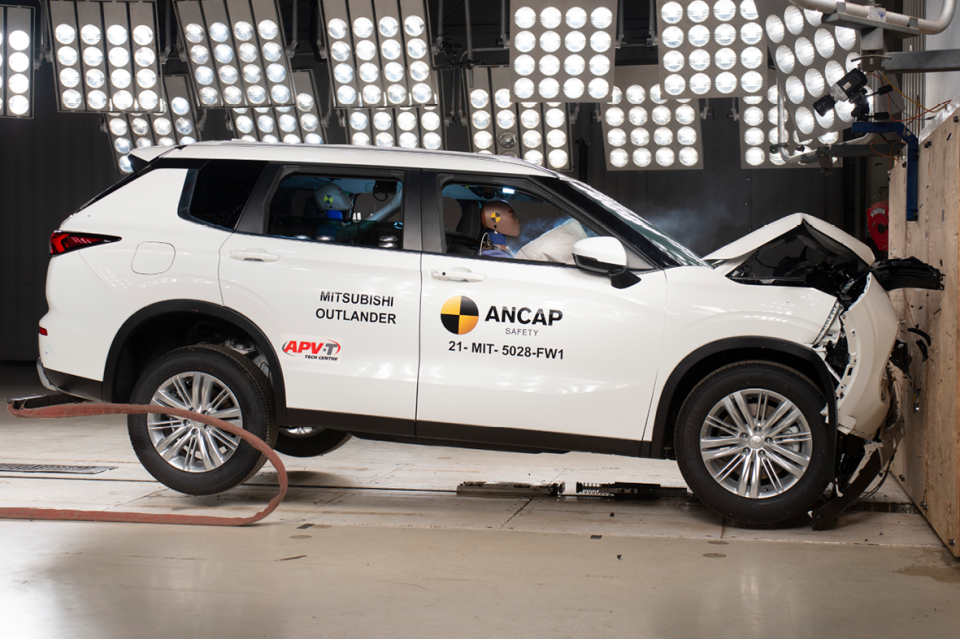
| Category | Mitsubishi Outlander |
|---|---|
| Adult occupant protection | 83 per cent |
| Child occupant protection | 92 per cent |
| Vulnerable road user protection | 81 per cent |
| Safety assist | 83 per cent |
Standard safety equipment includes:
- 8 airbags
- Driver
- Passenger
- Front side
- Curtain
- Centre
- Driver’s knee
- Autonomous emergency braking (forward and reverse)
- Adaptive cruise control
- Blind-spot monitoring
- Driver attention monitor
- Front and rear parking sensors
- Hill descent control
- Intelligent speed assist
- Lane-keep assist
- Rear cross-traffic alert
- Surround-view camera
- Traffic sign recognition
Aspire grades and above get Mi-Pilot, which combines lane centring and Traffic Jam Assist functions.
To see how the Mitsubishi Outlander stacks up against its rivals, use our comparison tool
How much does the Mitsubishi Outlander cost to run?
Like the wider Mitsubishi Australia range, the updated Outlander is backed by a 10-year, 200,000km warranty if it’s serviced by a Mitsubishi dealer. Otherwise the standard warranty is five years or 100,000km (whichever comes first). Servicing is required every 12 months or 15,000km (whichever comes first).
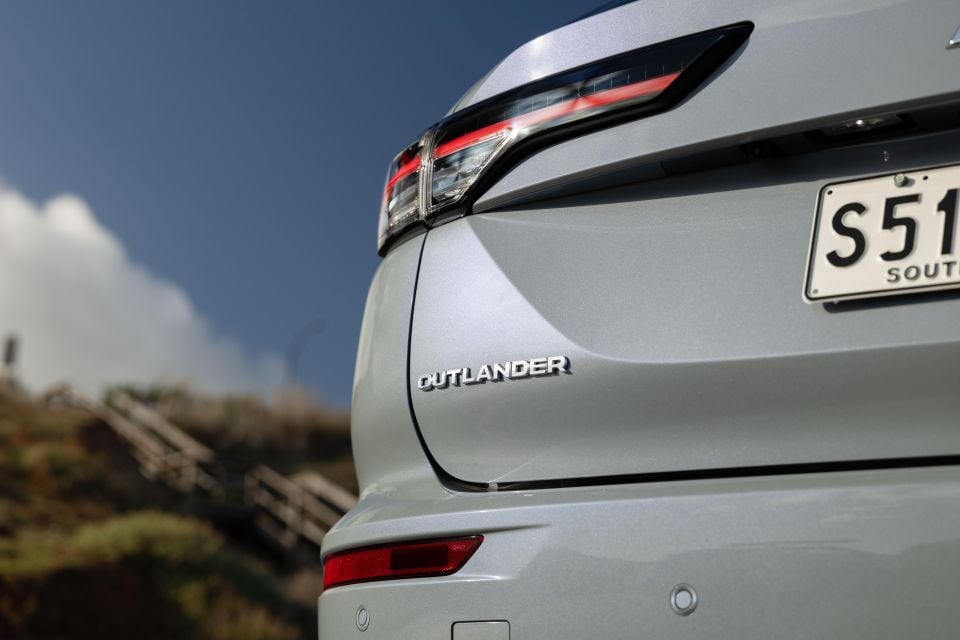
| Servicing and Warranty | Mitsubishi Outlander |
|---|---|
| Warranty | Up to 10 years or 200,000km |
| Roadside assistance | 12 months, then service-activated |
| Service intervals | 12 months or 15,000km |
| Capped-price servicing | 10 years |
| Average annual service cost over 10 years | $434 |
| Total capped-price service cost | $4340 |
Individual service pricing for the Outlander is outlined below:
| Service | Price |
|---|---|
| 1yr, 15,000km | $320 |
| 2yrs, 30,000km | $370 |
| 3yrs, 45,000km | $320 |
| 4yrs, 60,000km | $370 |
| 5yrs, 75,000km | $320 |
| 6yrs, 90,000km | $680 |
| 7yrs, 105,000km | $360 |
| 8yrs, 120,000km | $680 |
| 9yrs, 135,000km | $360 |
| 10yrs, 150,000km | $560 |
To see how the Mitsubishi Outlander stacks up against its rivals, use our comparison tool
CarExpert’s Take on the Mitsubishi Outlander
The Outlander was already a strong seller, and these updates not only feel like Mitsubishi is attempting to stamp its mark on a market segment owned by Toyota, but also show how important the model for the Japanese brand.
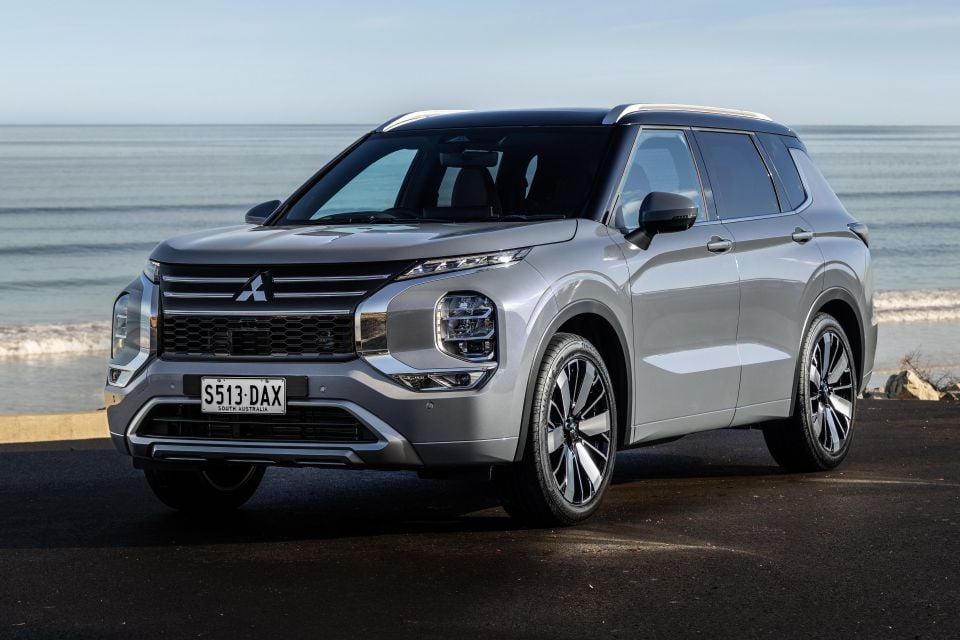
Enlisting Japanese engineers to help develop and test the upgraded model in our backyard is a move that underlines the importance of both the Outlander and the Australian market to Mitsubishi, and it benefits Mitsubishi Australia’s top-selling model greatly.
It’s now more compliant and handles better, while feeling more refined and sure-footed. It feels perfectly suited to Australian roads (funnily enough), and we’re sure the brand will take pride in the fact this tune will now be used globally.
If one of your reasons for looking past the Outlander in the past was its rough ride, it’s worth going for another test drive in the updated version. Even just sitting in one to see the updated interior layout and tech will be worth your time.
Beyond that and even though prices have increased, it’s still difficult to argue against the value proposition presented by the Outlander. You get loads of standard gear across the range, and there should be something for everyone across both seating configurations and drivetrains.

As for everything that hasn’t changed, Mitsubishi told us it employed an “if it ain’t broke, don’t fix it” policy. That means the adventurously bold styling remains with minor tweaks, which at least means the Outlander is recogniseable in a crowd.
While the engine and CVT combo may not be terribly fun, you do get a reliable powertrain that will go about its work without any fuss. A turbocharged engine would liven things up more, but there’s nothing really wrong with what we have now.
We’re very interested to see what the updated Outlander PHEV will bring later this year, as Mitsubishi has promised a similar treatment to what this model has received. Despite its higher cost, the PHEV has long been the more compelling and efficient Outlander, so we’re keen to test the upgraded version.
Until then, you could do much worse than the updated petrol Outlander, which has hit top form its latest iteration.

Interested in buying a Mitsubishi Outlander? Let CarExpert find you the best deal here
Click the images for the full gallery

